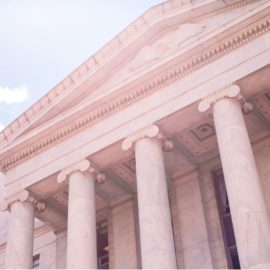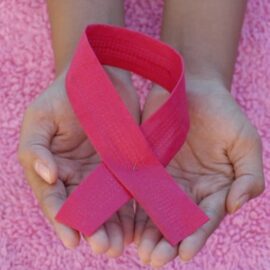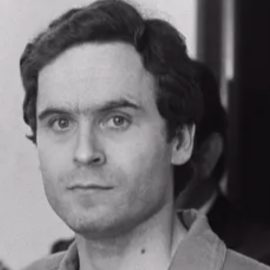

This article is an excerpt from the Shortform book guide to "The Emperor of All Maladies" by Siddhartha Mukherjee. Shortform has the world's best summaries and analyses of books you should be reading.
Like this article? Sign up for a free trial here .
Why haven’t we cured cancer yet? What were some of the most significant efforts in the history of our fight against cancer?
Humanity has been putting up the fight against cancer for decades, but victory has so far evaded us. Among the first key efforts were the establishment of the National Cancer Institute (NCI), a ban on tobacco advertising, and the National Cancer Act.
Keep reading to learn about some of the key milestones in our efforts to cure cancer.
The National Cancer Institute and the American Cancer Society
In 1937, U.S. President Franklin Roosevelt created the National Cancer Institute (NCI), a federally funded organization intended to coordinate and lead a national effort to cure cancer. Mukherjee says that this was the first time cancer had been in the national spotlight. However, America entered World War II in 1941, just a few years later. As a result, funds and resources (as well as public attention) unfortunately were redirected from the fight against cancer to the fight against the Axis.
(Shortform note: While Mukherjee implies that the NCI fell by the wayside because of World War II, the organization continued its fight against cancer throughout the war—albeit with reduced funding—and is still active today as part of the National Institutes of Health.)
However, Mukherjee says that the distraction didn’t last long. In 1943—before the war was even over—Reader’s Digest published a series of articles on detecting and screening for cancer, thereby bringing the disease back into the public eye.
In 1944, a group of professional businesspeople took advantage of the renewed interest in cancer to take over the American Society for the Control of Cancer (ASCC). Mukherjee describes the old ASCC as a small and ineffective nonprofit group staffed by medical professionals: people whose skills lay in medicine, not in business or public relations. The new board renamed the ASCC to the American Cancer Society (ACS) and began an aggressive campaign of public education and fundraising. Donations to the ACS increased exponentially, from around $300,000 in 1943 to over $12 million in 1947.
(Shortform note: The ACS is still active today, and it is dedicated to fighting cancer on numerous fronts: helping cancer patients find and afford treatment, preventing cancer through education and screening, funding scientific research, and pushing for laws and policies that support the fight against cancer.)
The Fight Against Tobacco Advertising
In 1964, a scientific report conclusively showed that smoking cigarettes increases the risk of lung cancer. According to Mukherjee, the Federal Trade Commission (FTC) proposed that an explicit warning be put on every package of cigarettes to dissuade people from smoking. However, Congress severely weakened the FTC’s suggested warning in order to protect the tobacco industry. The final warning, which went into effect in 1965, read, “Caution: Cigarette smoking may be hazardous to your health.” That vague, watered-down message didn’t have nearly the impact on smoking rates that the FTC had hoped for.
A few years later, in 1968, a landmark court case ruled that anti-tobacco ads had to be given proportional airtime with pro-tobacco ads on TV. As a result, Mukherjee says, public opinion began to swing against the tobacco industry, and tobacco use in America steadily declined starting in 1974.
However, Mukherjee adds that—for that generation—the damage from a lifetime of smoking and tobacco addiction was already done. It would take decades to see a corresponding drop in rates of lung cancer, because that drop would mostly occur in the next generation.
(Shortform note: Although there are no longer tobacco ads on TV, tobacco companies in the US still spend billions of dollars per year advertising cigarettes, e-cigs, and other products, and they heavily target young people with their ads. E-cigarette companies also came under fire for targeting kids and teens with flavors like lemonade and candy, leading the US Food and Drug Administration to ban flavors besides tobacco and menthol in 2020. Most smokers today smoke their first cigarette before the age of 18, and the Centers for Disease Control and Prevention (CDC) attributes that—at least in part—to such marketing.)
The National Cancer Act
In 1971, President Nixon signed the National Cancer Act, committing a total of $1.5 billion to cancer research over three years. However, Mukherjee says that many scientists and advocates were disappointed with the bill, which heavily prioritized clinical drug trials—testing specific drugs and treatments—at the expense of further research into the nature of cancer and other possible methods of treatment.
In 1985, a biologist named John Cairns assembled a comprehensive report on the progress of cancer treatments since the National Cancer Act of 1971. That report, along with a 1986 report by his colleagues John Bailar and Elaine Smith, showed that cancer-related deaths had actually increased during that time period.
According to Mukherjee, Cairns’s explanation was that the extreme focus on cancer treatment was misguided. Citing precedents like cholera, scurvy, and tuberculosis, Cairns argued that the greatest results always came from preventing diseases, and the same principle must be applied to cancer.

———End of Preview———
Like what you just read? Read the rest of the world's best book summary and analysis of Siddhartha Mukherjee's "The Emperor of All Maladies" at Shortform .
Here's what you'll find in our full The Emperor of All Maladies summary :
- An overview and rough timeline of the fight against cancer
- A look into the more technical aspects of cancer and cancer treatment
- The social aspects of the fight against cancer






